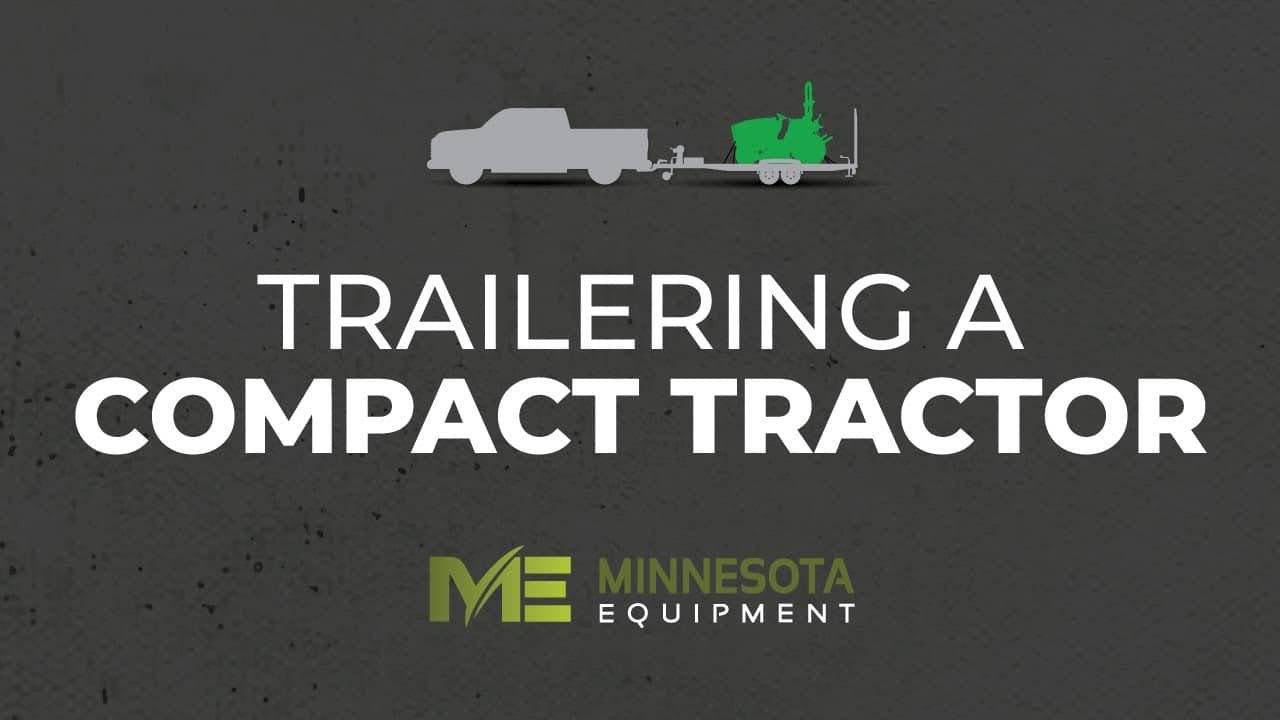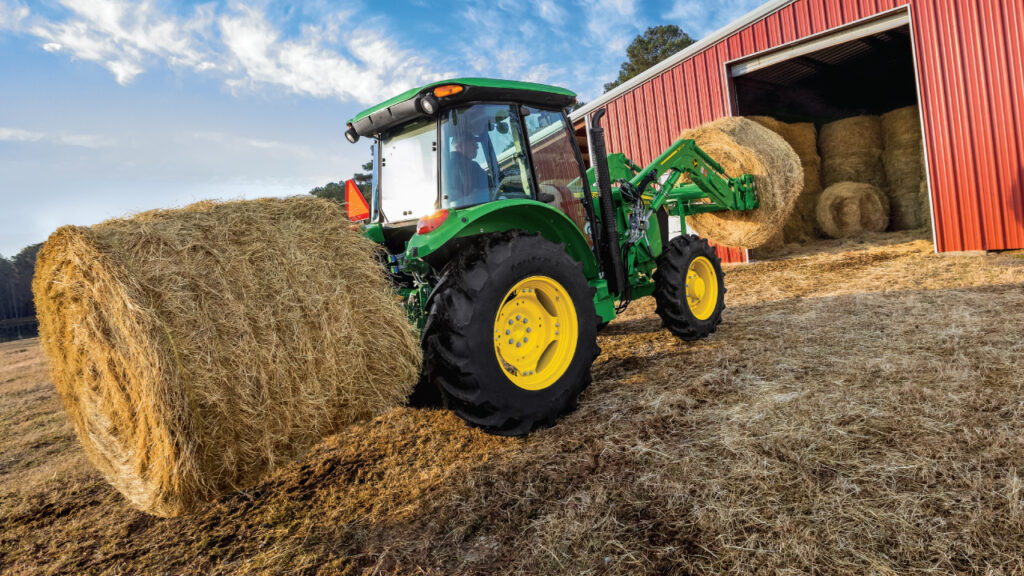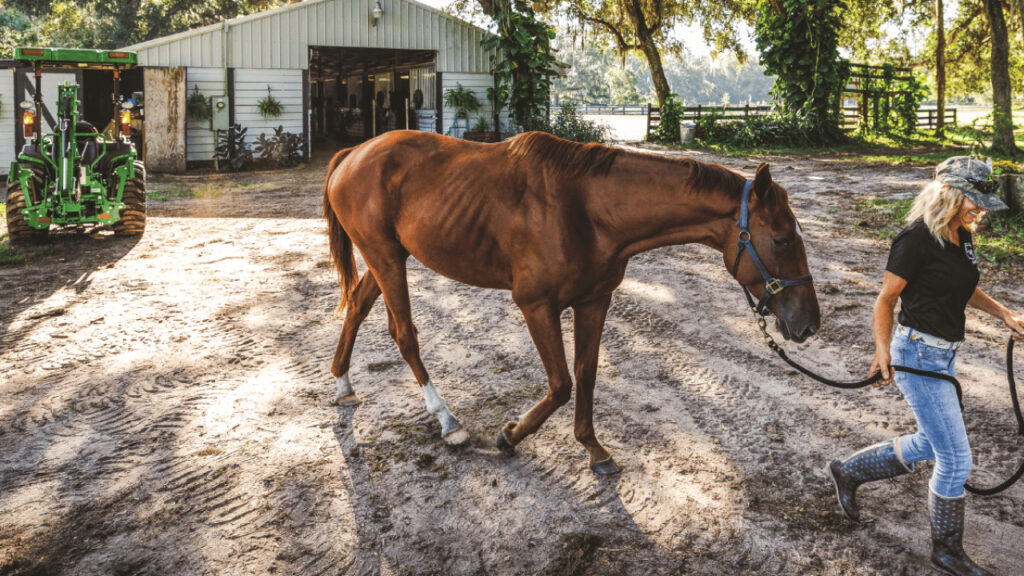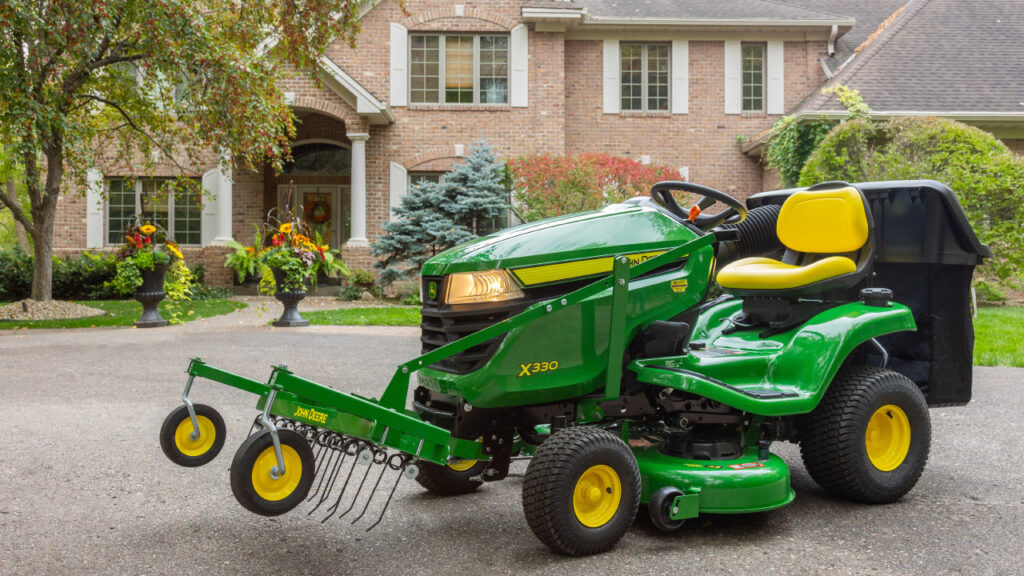
One of the many benefits of owning a John Deere compact tractor is you can easily trailer the tractor from one work site to another. This allows you complete projects at multiple locations with one tractor.
For example, you can tackle lawn, garden and farm chores on the home front. Then, trailer your compact trailer to a recreational property for wildlife habitat management projects such as food plots. Such mobility also makes it easy to bring the tractor to your local Minnesota Equipment dealership for service.
To help you get your tractor safely from one jobsite to the next, we offer the following tips. Our experienced staff is also happy to discuss trailering tactics in person at any of our convenient locations. If you prefer to let someone else move your machinery, we can arrange to have one of our professional drivers load and haul your tractor and implements.
Safety First
Safety is the top priority when trailering a tractor. These hard-working, heavy-duty machines need to be hauled by trailers and tow vehicles that can handle the cargo. Make sure load and towing capacity ratings for the trailer, hitch, ball and tow vehicle exceed the weight of the tractor and attachments. Owner’s manuals list equipment weight, or you can find it at www.deere.com. Also inspect key components including tow vehicle and trailer brakes, tires, lights and turn signals.
Review your compact tractor’s owner’s manual for recommendations on how to transport the tractor on a trailer. You should also know and follow all state laws and regulations. When in doubt, contact the Minnesota State Patrol or your friends at Minnesota Equipment.
The driver is a critical part of safe towing, too. Familiarize yourself with the tow vehicle and trailer. If possible, don’t jump on the interstate for your maiden voyage. Practice towing the trailer in light-traffic areas where slow speeds are the rule. An empty parking lot is a great place to hone your turning and backup skills. Don’t forget to adjust your mirrors or add an auxiliary camera system to boost rear visibility.
Keep Your Hood Down
In numerous compact tractor manuals, John Deere reminds us that transporting a tractor on a trailer (or truck bed) at high speeds can result in the hood or engine cover raising and possibly coming off the machine.
To help prevent wind from blowing the hood or cover open, position the machine on the trailer so the hood opens from rear of trailer. It’s also smart to secure the hood with the factory installed locks or latches. If no locks or latches exist, use tie-down straps to put the hood on lockdown.
Also position the tractor so the weight is evenly distributed on the trailer. Too much weight on the front or back of the trailer can affect steering, braking and traction. Once your tractor is in position on the trailer, lower any implements to the trailer deck. Then lock the parking brake and stop the engine. Remove the key and close the fuel shut-off valve.
Securing The Load
Tractors, like other loads, must be properly secured to the trailer. An unsecured load can produce catastrophic and even fatal results to yourself and other motorists.
John Deere recommends fastening the machine to the trailer with heavy-duty straps, chains, or cables (check for chips, nicks, rips and other damage) using recommended securement points. Both front and rear straps must be directed down and outward from machine. When choosing tie downs, remember they should provide strength equal to at least half the load weight. Again, Minnesota Equipment or the State Patrol can offer technical guidance.
Once underway, the State Patrol advises motorists pulling trailers to reduce speed; increase following distance (state law requires a 500-foot interval in rural areas); be aware of and prepared for the effects of wind gusts and passing vehicles; stop every 100 miles to check trailer, load and hitch.
If you’re new to towing, be forewarned that the extra weight affects your vehicle’s handling, acceleration and braking abilities. So take it easy and use extra caution, especially when braking and turning. Also keep in mind the extra length of the trailer when turning or passing.
Following these tips can help you safely trailer your compact tractor from Point A to Point B and back home again. Don’t forget, the advice applies whether you’re trailering your tractor 1,000 miles or just down the street. Your safety—and that of your machinery and fellow motorists—depends on you following the rules of the road.


 MyME
MyME



